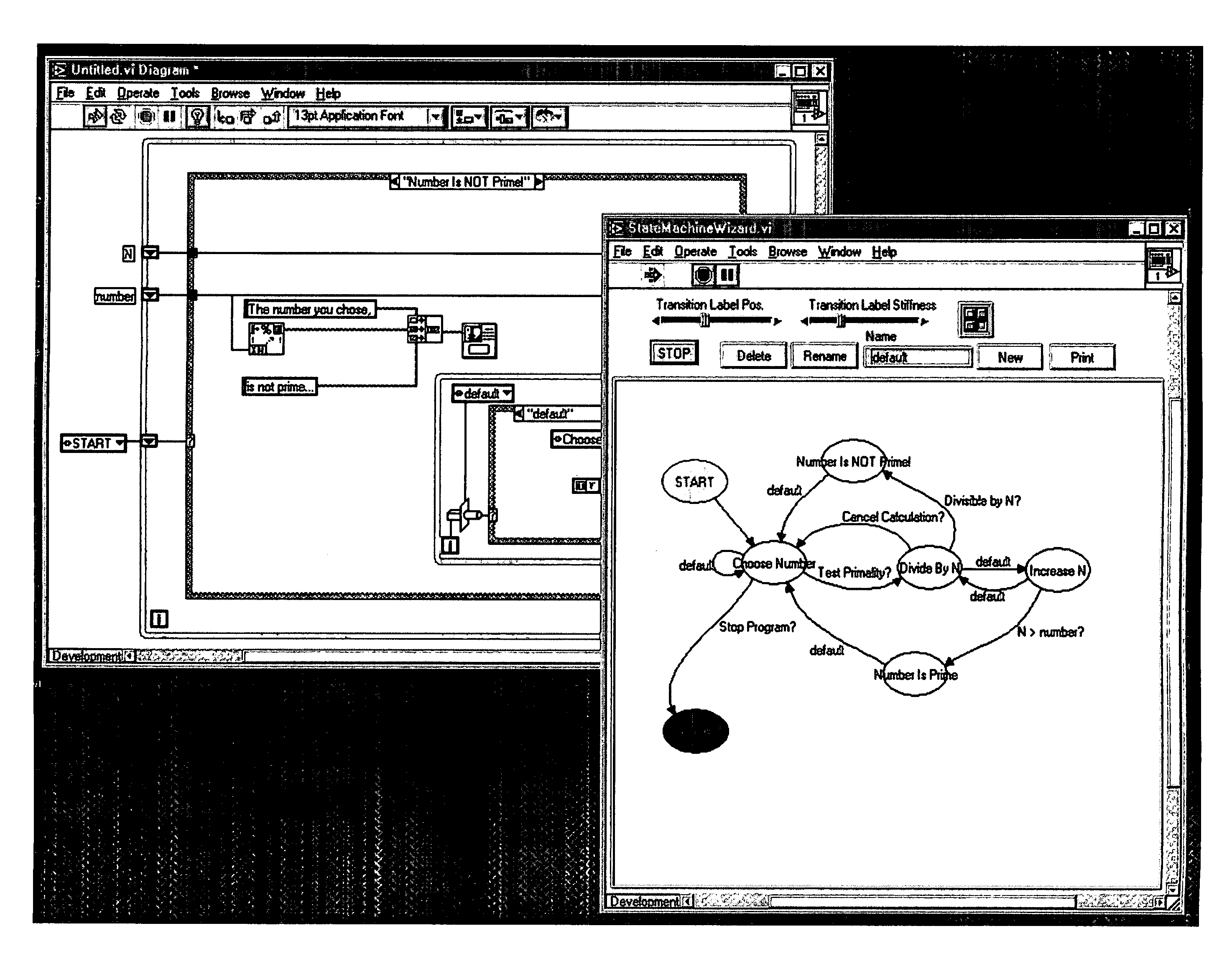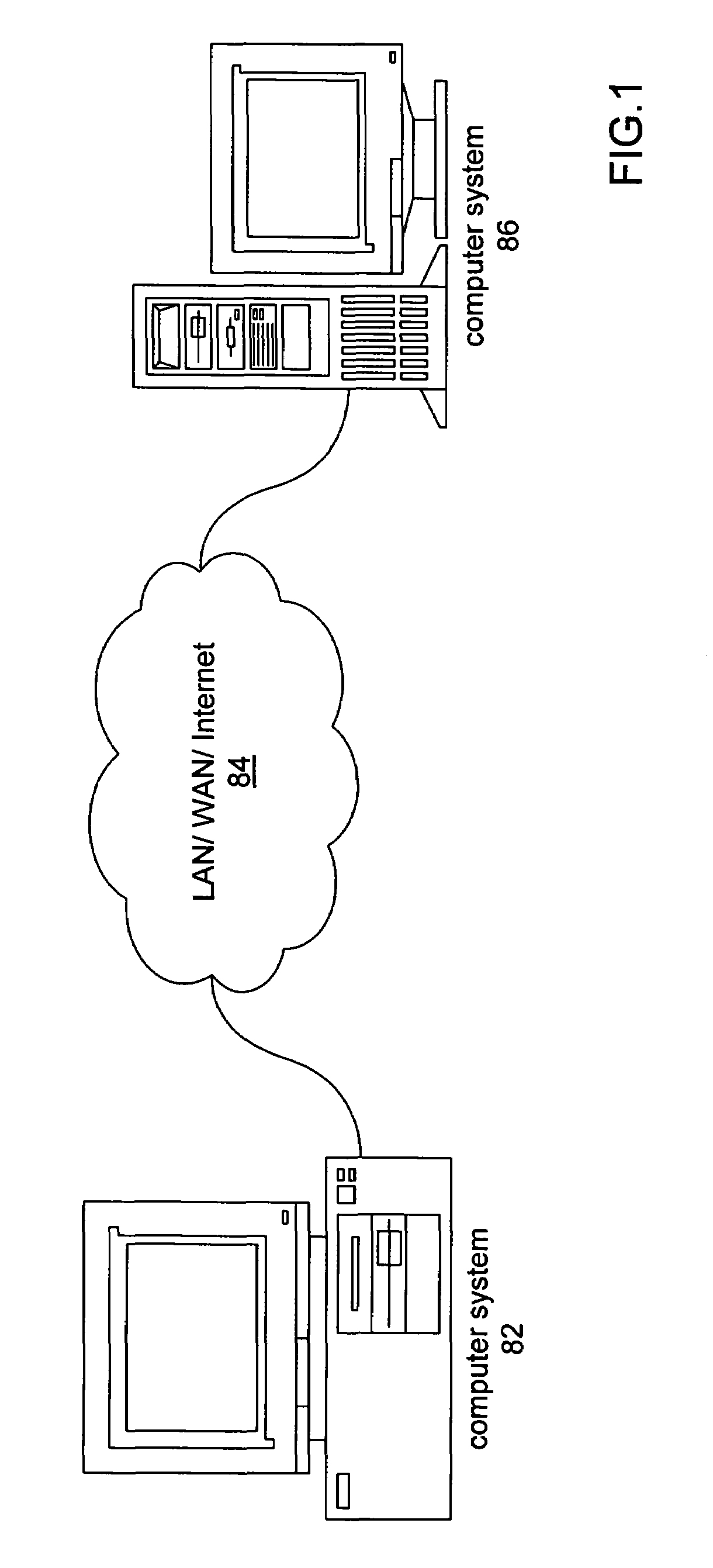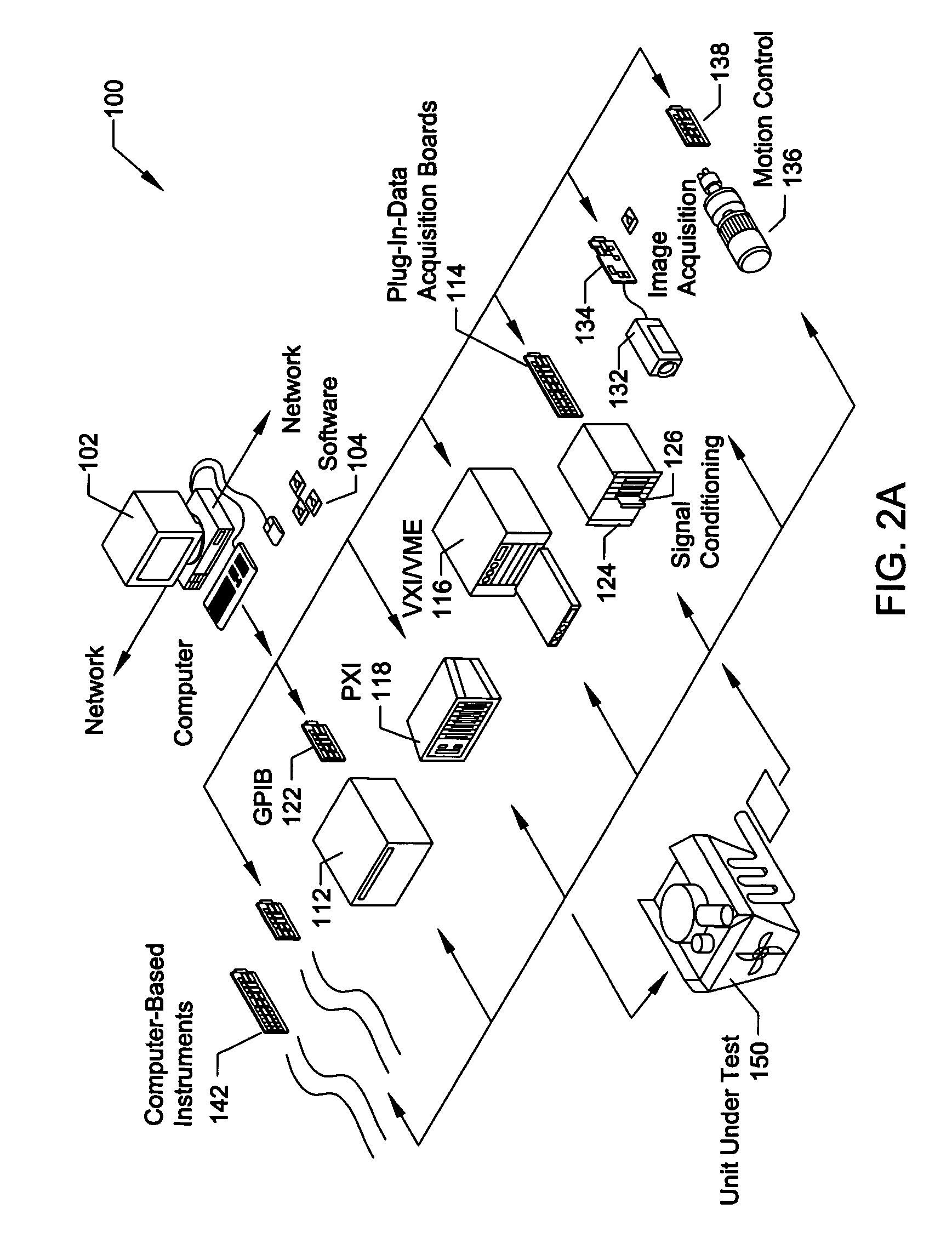System and method for programmatically modifying a graphical program in response to program information
a program and program information technology, applied in the field of graphical programming, can solve the problems of user programming skills and ability to interact with the computer system often becoming a limiting factor in the achievement of optimal utilization of the computer system, complex task of programming a computer system to model or implement a process often being further complicated, etc., to facilitate the retrieval or re-creation of program information
- Summary
- Abstract
- Description
- Claims
- Application Information
AI Technical Summary
Benefits of technology
Problems solved by technology
Method used
Image
Examples
Embodiment Construction
Incorporation by Reference
[0059]The following references are hereby incorporated by reference in their entirety as though fully and completely set forth herein.
[0060]U.S. Pat. No. 5,481,741 titled “Method and Apparatus for Providing Attribute Nodes in a Graphical Data Flow Environment,” issued on Jan. 2, 1996.
[0061]U.S. Pat. No. 6,064,812 titled “System and Method for Developing Automation Clients Using a Graphical Data Flow Program,” issued on May 16, 2000.
[0062]U.S. Pat. No. 6,102,965 titled “System and Method for Providing Client / Server Access to Graphical Programs,” issued on Aug. 15, 2000.
[0063]U.S. patent application Ser. No. 09 / 136,123 titled “System and Method for Accessing Object Capabilities in a Graphical Program” filed Aug. 18, 1998.
[0064]U.S. patent application Ser. No. 09 / 518,492 titled “System and Method for Programmatically Creating a Graphical Program”, filed Mar. 3, 2000.
[0065]U.S. patent application Ser. No. 09 / 595,003 titled “System and Method for Automatically G...
PUM
 Login to View More
Login to View More Abstract
Description
Claims
Application Information
 Login to View More
Login to View More - R&D
- Intellectual Property
- Life Sciences
- Materials
- Tech Scout
- Unparalleled Data Quality
- Higher Quality Content
- 60% Fewer Hallucinations
Browse by: Latest US Patents, China's latest patents, Technical Efficacy Thesaurus, Application Domain, Technology Topic, Popular Technical Reports.
© 2025 PatSnap. All rights reserved.Legal|Privacy policy|Modern Slavery Act Transparency Statement|Sitemap|About US| Contact US: help@patsnap.com



